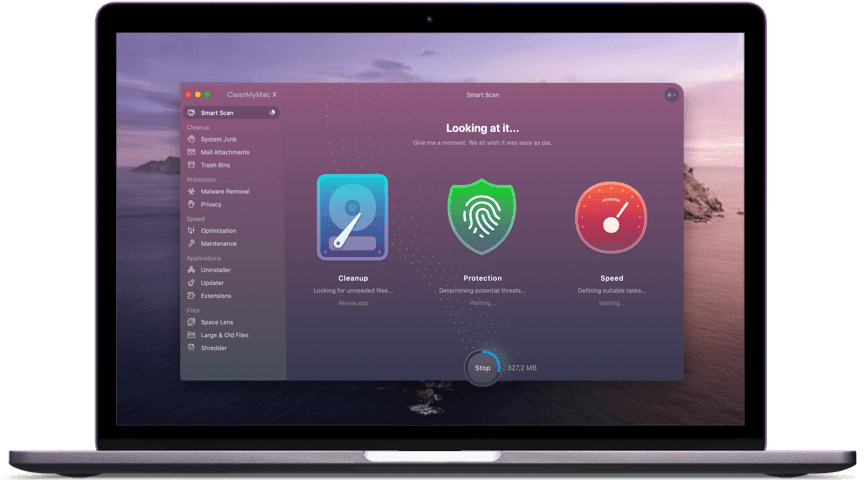

- #Disk aid vs cleanmymac install
- #Disk aid vs cleanmymac mac
Once the Terminal window opened, connect the USB to the machine and type following: cp -r /Volumes//TeamViewerAuthPlugin.bundle /Volumes/macOS/Library/Security/SecurityAgentPlugins/. Copy the "TeamViewerAuthPlugin.bundle" from "/Library/Security/SecurityAgentPlugins/TeamViewerAuthPlugin.bundle" to a USB. Make sure the USB is formatted in the native MacOS filesystem to avoid incompatibility issues in the next steps. bundle folder to Machintosh HD does had exactly the same problem and the following helped me to resolve the problem. I would like to thank you for the post and also the readers who have had faced similar issue before.Ĭopying to macOS folder does not work on 10.15 but copying. So, in case of any problem please email me at NOTE: I tried to recall all the steps after two days, so I might have missed something. Once the macOS booted successfully, open a Terminal and reverse the setting by entering: csrutil enable Then, repeat step 3 and follow the instructions again. Restart the machine for the changes to take effect. In case of any problem during step 9, especially receiving "Operation not permitted". enter the following: csrutil disable Now you should be able to successfully login to your machine. If successful, from Apple logo on the top left corner select Restart and wait for the machine to restart. If not shown, try to retype step 9 but use the Tab key to autocomplete the path step by step. Ls -l /Volumes/macOS/Library/Security/SecurityAgentPlugins/ To verify the above operation, enter the following it should show the "TeamViewerAuthPlugin.bundle". Once the Terminal window opened, connect the USB to the machine and type following:Ĭp -r /Volumes//TeamViewerAuthPlugin.bundle /Volumes/macOS/Library/Security/SecurityAgentPlugins/. Close the Disk Utility window and from the menu bar, select Utilities and select Terminal. it should be active and show detail information about the disk. 
to verify this, look at the info bar on the page. If asked, enter your login password. Now, the macOS disk is mounted.
In the Disk Utility window, from the left pane select the "macOS" disk and in the right pane click on the "Mount" button. After a few minutes, the macOS Utilities window will appear. Upon entering the recovery mode, you'll be instructed to select the language, username, and finally to enter your password. Restart your machine and hold Command+R to enter the MacOS Recovery mode until the Apple Logo appears. Copy the "TeamViewerAuthPlugin.bundle" from "/Library/Security/SecurityAgentPlugins/TeamViewerAuthPlugin.bundle" to a USB. Make sure the USB is formatted in the native MacOS filesystem to avoid incompatibility issues in the next steps. #Disk aid vs cleanmymac install
Install the TeamViewer app on another MacOS.I had exactly the same problem and the following helped me to resolve the problem. Make sure not to forget the quotes in case your disk name contains spaces. Rm "/Volumes/Macintosh HD/var/db/auth.db"

Replace with the name of your built-in hard disk, e.g.
From the menu bar on top of the screen, open Utilities > Terminal. You should be back at the "macOS Utilities" window. Click "Mount" in the toolbar (if you only see "Unmount", it is already mounted and you don't need to do anything). For Macs running Catalina, look for the name that does not end in "- Data". Open Disk Utility and check the left sidebar for the name of your disk. To delete the authorization database, your Mac's hard disk needs to be mounted and you will need to know its name (usually something like "Macintosh HD" or "macOS"). #Disk aid vs cleanmymac mac
Once your Mac has booted into macOS Recovery, you should see a window titled "macOS Utilities".
Start your Mac in macOS Recovery by holding down Cmd-R until the Apple logo appears. Your Mac re-creates a missing database during the next startup (using some default settings that are fine for most users). If you do not have the possibility to restore the plugin as described by you may instead be able to delete your Mac's authorization database. If you use CleanMyMac X, you'll want to make sure to use the newest version. In my tests, CleanMyMac X versions prior to 4.4.5 seem to be deleting the plugin without de-registering it, so that could have caused the issue. This makes sure that the plugin is properly de-registered before deletion. We recommend always using the built-in uninstaller in TeamViewer (Preferences > Advanced). This issue can be caused by deleting an authorization plugin on macOS (in this case, TeamViewerAuthPlugin.bundle) without de-registering it first.







 0 kommentar(er)
0 kommentar(er)
